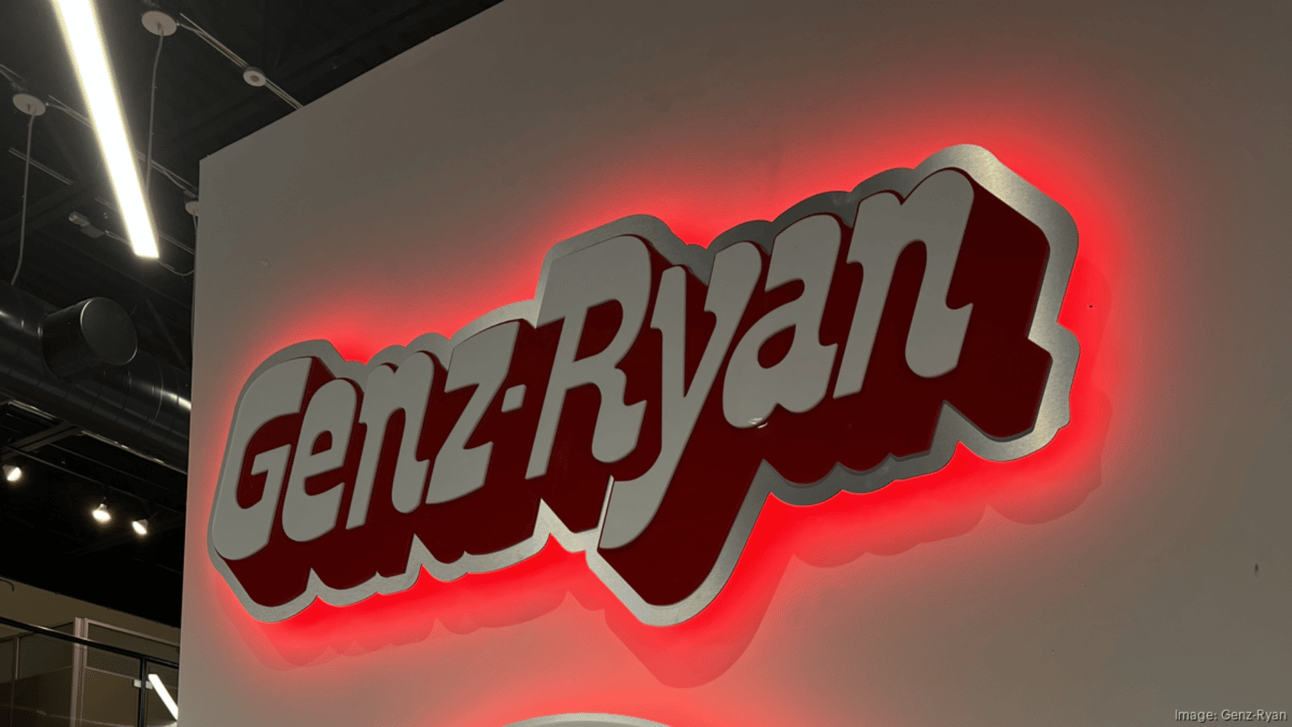An inside look at Genz-Ryan’s tech stack
Seven core pieces of software keep the company running, says CEO Jon Ryan

Image: The Business Journals; Logo: Property of Genz-Ryan
Travel about 20 minutes south of Minneapolis and you’ll find Genz-Ryan, an HVAC, plumbing, and electrical company serving the Twin Cities for almost 75 years.
-
At the helm of the operation, which counts over 100 employees, is Jon Ryan, a tech-savvy Midwesterner, who shared with us the technology powering his company in a 50-minute conversation.
The big picture: Seven core pieces of software keep Genz-Ryan running: ServiceTitan (including Phones Pro), Avoca, Faraday, measureQuick, Rilla, Buck.ai, and Hatch.
What’s happening: Ryan gave us some color on each one:
-
Phones Pro: “It’s been great for outbounding. If you’ve been around for 5 to 10 years, you need to be mining your existing customer base. They say about 8% of your base will need a replacement in a given year, assuming a 12 to 15-year lifespan.”
-
Avoca: “We plug in our own rubrics and scripts and the AI analyzes calls. It’s useful because you can go back and see exactly where [CSRs] aren’t following the process. We’re also using it for after-hours and overflow.”
-
Faraday: “We all have problems with technicians not entering serial and model numbers or entering the wrong numbers of installed equipment, so we’re able to take pictures of anything with a serial number, and it puts that information into our equipment list in ServiceTitan. It also searches the manufacturer and federal database for recalls.”
-
measureQuick: “Basically, it takes all the gauges that we’re supposed to be using on every service call, grades the system A through F, and puts it into a plain English report that you can give to homeowners.”
-
Rilla: “We’re effectively able to do ridealongs with technicians every day, and coach them in real-time.”
-
Buck.ai: “It pulls your calls, recommends a schedule to publish, and then pushes it into ServiceTitan. And it’ll reconfigure your dispatch board on whatever interval you set — we do it every hour. There was some light functionality we liked better about Buck than ServiceTitan’s Dispatch Pro.”
-
Hatch: “Hands down, every company should explore something like Hatch or Chiirp for re-hashing, speed to lead, and nurturing. It aggregates all of our Facebook and Instagram messages, and Contact Us forms, and we can automate responses.”
Of note: The company takes a slightly different approach to measureQuick than most.
-
“In the A through F rating, [a customer’s system] needs to have at least an 85% score before we bring them on as a service plan member,” Ryan explains.
-
Why? “Everyone has those system installs you’re going back on, but it gives credibility to what you’re doing,” he says.
-
“You’re handing the homeowner a report that says ‘Your system is installed correctly.’ If they have problems, we can say, ‘Your system had a 99% score when it was installed, and we can score it again to ensure proper operation and system health.’”
Zoom out: While Genz-Ryan utilizes a plethora of software, Ryan quickly pointed out that it’s not just for sh*ts and giggles.
-
“You can go broke spending all of your money on technology enhancements, so you have to be very clear upfront about what you’re expecting from it,” he says.
-
“Am I installing this because it’s cool? Or can I pinpoint a specific ROI or cost savings?”
On contracts: Ryan suggests that contractors should negotiate not just price, but contract terms with every new technology vendor.
-
“I think it would behoove you to get an opt-out. Before you get locked into a 12-month agreement, you should ensure that you have adequate time to test it,” he says.
-
“And don’t go for 30 days, [because] you’re gonna need at least 60 to 90 days to evaluate it,” he adds.
-
“Every sales rep will tell you that their product will butter your bread and fold your laundry, but it won’t.”
On implementation: “Every implementation needs a champion — someone who owns it. They may not do all the work, but they own the process,” Ryan notes.
-
“I’d also check references,” he says. “Get three or four references, and if everyone can’t tell you a decent amount of pain points, then don’t do it, because they’re not telling you everything.”
-
Yes, but: “If you’ve got one or two people, you probably don’t need all of this automation. However, I’d say you do need a re-hash solution like Hatch,” he adds.
On execution: There’s a difference, Ryan notes, between knowing which technology is available, and actually using it.
-
“If it’s been a year [since you brought in Rilla] and nothing’s improved, well, what did you do?” he asks. “‘We didn’t have time to analyze everything.’ Okay, your fault.”
-
“‘My top tech refused to report everything so no one else took it seriously and we didn’t take action.’ Okay, again, your fault.”
The bottom line: “These systems rely on you putting in data — and garbage in equals garbage out. They’re only as good as the execution and the people behind the execution.”
Editor’s note: This is not a paid endorsement for any of the products named.
Links: ServiceTitan, Avoca, Faraday, measureQuick, Rilla, Buck.ai, Hatch
📬 Get our stories in your inbox
Keep reading
Redwood Services to land majority investment in $1.1 billion deal
The company is set to receive a majority investment from Toronto-based Altas Partners, according to people familiar with the matter
Wrench Group bets on remote monitoring, partners with SmartAC.com
Wrench Group's contractors will be able to leverage a 24/7 stream of monitoring data to address customer issues before they become emergencies


